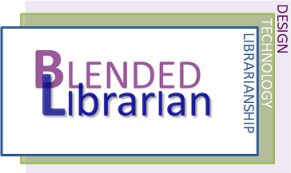Many higher education institutions are implementing or considering BYOD (Bring Your Own Device) models for deploying campus technology. It makes sense since so many more students are coming to campus with multiple devices, from desktops to laptops to tablets and smartphones. Academic librarians support students who want to explore becoming BYOD students by lending tablets, chromebooks and other devices.
According to a new IT spending guide from IDC Government Insights, U.S. Higher education institutions are expected to spend about $6.6 billion on IT in 2015, much of that driven by investments in enterprise networks and higher end notebook computers. Among the key trends:
-
U.S. Higher education institutions are expected to spend about $6.6 billion on IT in 2015, much of that driven by investments in enterprise networks and higher end notebook computers.
-
U.S. K-12 schools are expected to spend about $4.7 billion, on IT in 2015 much of that lead by investments in applications and general PC upgrades.
-
Tablets & readers will grow by 8% across all education levels and types by the end of 2015, for a total of $522 million.
-
Spending on notebook computers peaked in 2014 at just over $4 billion across all education levels and types. It will drop about 6.9% for 2015.
What caught my attention was that third bullet point. I currently see very few tablets being used by students at my library. Among those students who are not sitting at a desktop computer, on any given day I see 80% of the students with a laptop. I observe more students fiddling with a smartphone than a tablet. When I do observe a student with a tablet it appears there is media consumption in progress – or game playing – and nothing wrong with either of those activities. I could say the same thing about students on laptops.
That’s today. Tomorrow I expect we will see many more students with tablets and readers. That, I believe, will be driven by BYOD initiatives in K-12 where tablets and readers – and even inexpensive chromebooks – are increasingly deployed for mass distribution of personal computing technology. Where BYOD is not an affordable option for families it is possible school districts will invest in the devices and use money previously spent on textbooks for tablets and educational technology apps. Commercial textbooks will be replaced by OER and other public accessible digital learning content. This will in turn support active, problem-based, team learning in ways that traditional textbooks never could.
What does this mean for academic librarians? We need to start thinking, planning and preparing now for a new generation of learners who will come to us expecting to use the technology tools that shaped their education experience. What apps should we be deploying or even creating that will promote the development of research and writing skills? Our approach to learning will need to shift from lecture, demonstration and targeted research activity to team-based problem solving where students use their handheld technology to conduct research in the pursuit of creative solutions. No doubt, college students will still be researching and writing papers, but add to that assignments that prepare students for the workplace of the future.
Two years ago I didn’t own a tablet. Now I do and it’s replaced about fifty percent of the work I do on desktops and laptops – owing primarily to a whole slew of tools my institution provides for cloud-based productivity (google docs, Box, Office 365, Lynda, etc), plus note taking apps, every social media tool I need, feed readers, save/read later and content management apps (diigo, pocket, pushbullet, etc) and more – aided by a simple keyboard cover. The next hurdle is to learn how to better leverage the tablet as educational technology – and the apps available to promote better learning and research skill development. That may keep me one step ahead of our students. How are you using a tablet at your library?
